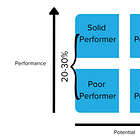Designing for Trust
The Final Post of the Trust-Autonomy Series: Why Trust Shouldn’t Depend on Vibes, Charisma, or Proximity
We’ve spent the last six posts exploring what happens when trust and autonomy collide:
The illusion of empowerment when clarity is missing.
The culture damage when we confuse compliance for commitment.
The chaos (and potential) that happens in the messy middle of change.
Now it’s time to bring it home.
I cannot end this series without saying this: Trust is not a vibe. It’s a system.
If a teacher only feels trusted because of who their principal is—or whether they happen to be the favorite voice in the room—that’s not real trust. It’s proximity-based privilege.
If a team only feels empowered when they’re “left alone,” and not when they’re coached—that’s not empowerment. It’s abandonment wrapped in nostalgia.
The goal of this final post is simple: To show that trust can be designed and that it must be—if we want it to scale, last, and show up for every teacher, every student, every time.
Why We Have to Design Trust (Not Just Hope for It)
When trust depends on:
The right principal,
The right team chemistry,
The right person running the meeting…
…it evaporates as soon as those variables change.
But when trust is baked into the structure—how we meet, how we coach, how we make decisions—it becomes something people can count on, not just hope for.
You can’t coach your way out of broken systems.
But you can design systems that naturally coach people toward trust.
Let’s talk about the five design levers that matter most.
Five High-Impact Places to Design for Trust
These aren’t the only areas that shape trust. But they are the most leveraged places where systems either reinforce it—or destroy it.
1. Coaching Systems
Why it matters:
The fastest way to erode trust is to make feedback feel like a punishment.
The fastest way to build it is to normalize feedback as part of professional growth.
Design Trust By:
Embedding regular coaching cycles with reflection—not just correction
Offering opt-in coaching for strong performers, not just remediation for strugglers
Publicly celebrating micro-wins, not just final products
When people know coaching is about belief in their potential, not fixing their flaws, trust grows.
2. Decision-Making Structures
Why it matters:
People don’t need to make every decision. But they need to know how decisions are made—and when their voice matters.
Design Trust By:
Clarifying decision-making roles (Who decides? Who’s consulted? Who’s informed?)
Building in staff voice where it actually shapes outcomes (not just surveys after the fact)
Consistently following through on the commitments made in decision spaces
When people can predict how decisions are made, they stop trying to read the room—and start contributing to it.
3. Meetings & Communication Norms
Why it matters:
Meetings are often where trust is lost—through wasted time, top-down delivery, or public surprises. But they can also be where trust is built—through thoughtful facilitation and shared thinking.
Design Trust By:
Using standing agendas that include reflection, inquiry, and collaboration—not just announcements
Including protocols that protect equity of voice (e.g., thinking time, structured turns)
Offering rationale behind decisions—not just directives
A strong meeting culture sends the message: we value your time, your thinking, and your dignity.
4. Accountability Structures
Why it matters:
In healthy systems, accountability isn’t what happens to people. It’s what people take for themselves—and each other.
Design Trust By:
Co-constructing goals and growth areas instead of assigning them
Reviewing progress in teams to promote peer learning and normalize vulnerability
Using data as a conversation starter—not a judgment endpoint
When people feel safe to admit gaps and supported in closing them, they stop performing—and start improving.
5. Onboarding & Transitions
Why it matters:
You never get a second chance to make a first impression. The way people experience their first few weeks tells them everything about whether trust will be earned—or expected without support.
Design Trust By:
Starting with strengths: Who are you? What do you bring?
Assigning a trusted peer—not just a handbook—for questions and connection
Modeling vulnerability from day one (“Here’s what I didn’t know when I started…”)
Onboarding shouldn’t just orient people to rules. It should invite them into culture. Check out this onboarding literature review.
Designing trust is designing culture
If your goal is to “build trust,” don’t start with a survey. Start with your systems.
Ask:
What happens when someone takes a risk here?
What’s the first experience of coaching like?
How do people know they’re seen, supported, and safe?
Because the truth is:
People don’t trust you because you’re “trustworthy.”
They trust you because the system proves it—over and over again.
Leader Reflection
Where in your organization is trust reliant on personality instead of process?
Where are people getting different trust experiences based on role, proximity, or perceived skill?
What’s one structure you could redesign—not to “tighten control,” but to loosen fear?
Closing the Series
We’ve talked about:
Why autonomy fails without trust
Why trust crumbles without structure
Why real culture change starts by stepping into the dip—and staying there on purpose
Now it’s your turn.
This work isn’t about being the “right kind” of leader.
It’s about building the kind of system where good people can work—and where everyone can trust that the rules of engagement are real.
Trust doesn’t scale through charisma.
It scales through design.
To all my school leaders, coaches, and education champions: Thank you for building systems that make it safe for people to grow.
Some bonus tools coming your way! Get ready!












